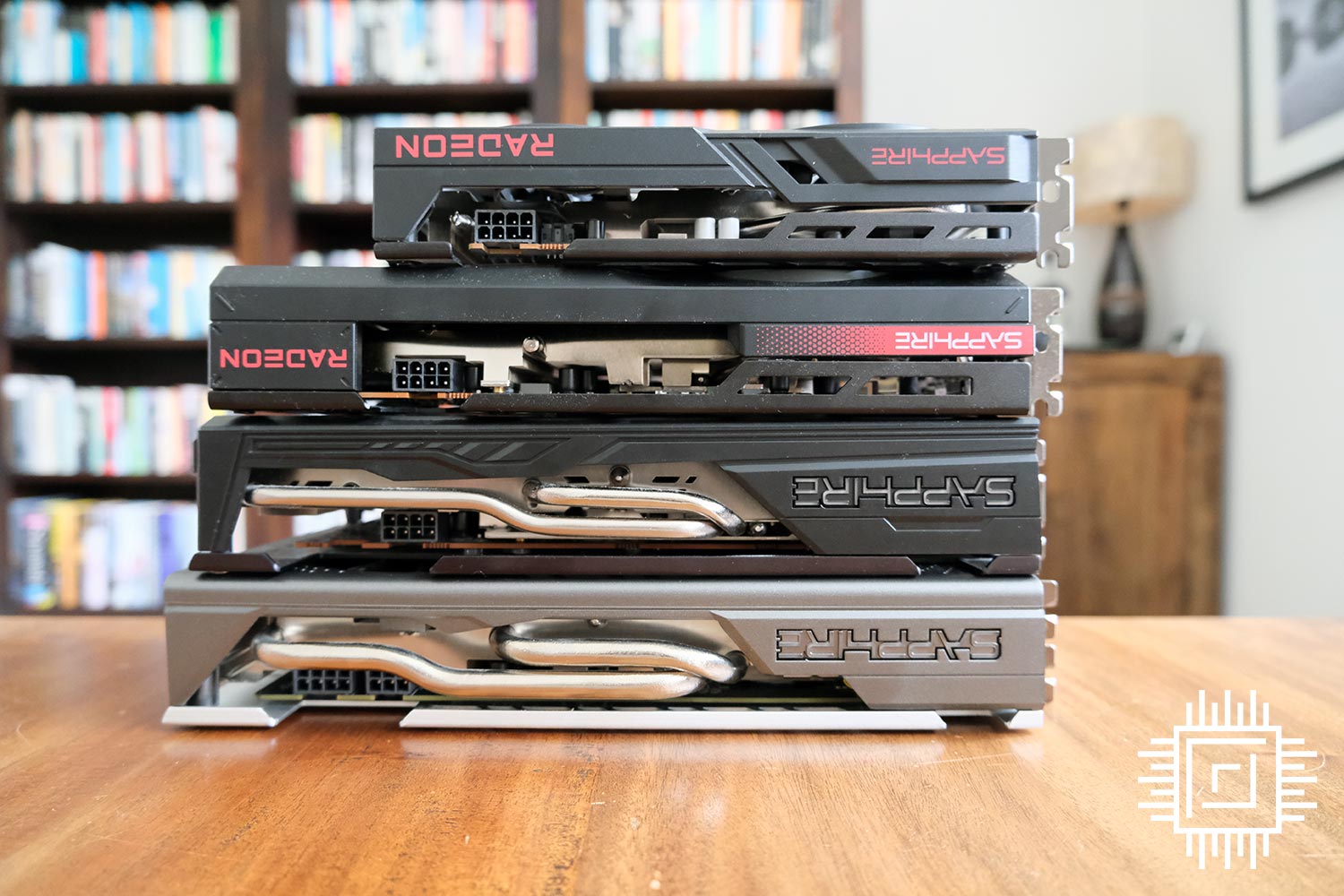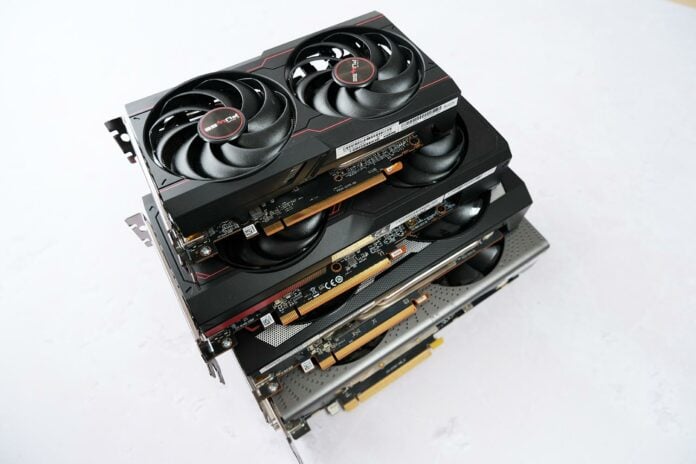Little else stokes the PC enthusiast’s imagination as working out which component upgrade offers the best bang for your buck. Agnostic of motherboard and platform, the discrete graphics card is always near the top of the wish list. And why not. From delivering beautiful imagery through to keeping up with system requirements for the latest triple-A titles, dropping hard-earned moolah on Radeon, GeForce or Arc makes a whole lot of sense.
Yet most reviews of cutting-edge graphics cards tell only half the story. More often than not, a new GPU – which is the culmination of many years of work by myriad groups within multi-billion-dollar companies – is compared against other, new GPUs. That’s all fine and well, because contextualising results is important, but let’s be honest, apart from wallet-rich enthusiasts who must have the latest and greatest, most punters don’t switch cards from one generation to the next.
Rather, they wait until their present graphics card is rendered long in the tooth by ever-increasing demands imposed by fresher game engines and associated moves into monitors carrying higher resolutions. What was once good no longer cuts the mustard, through no real fault of the graphics card, thus impressing upon the need for an upgrade.
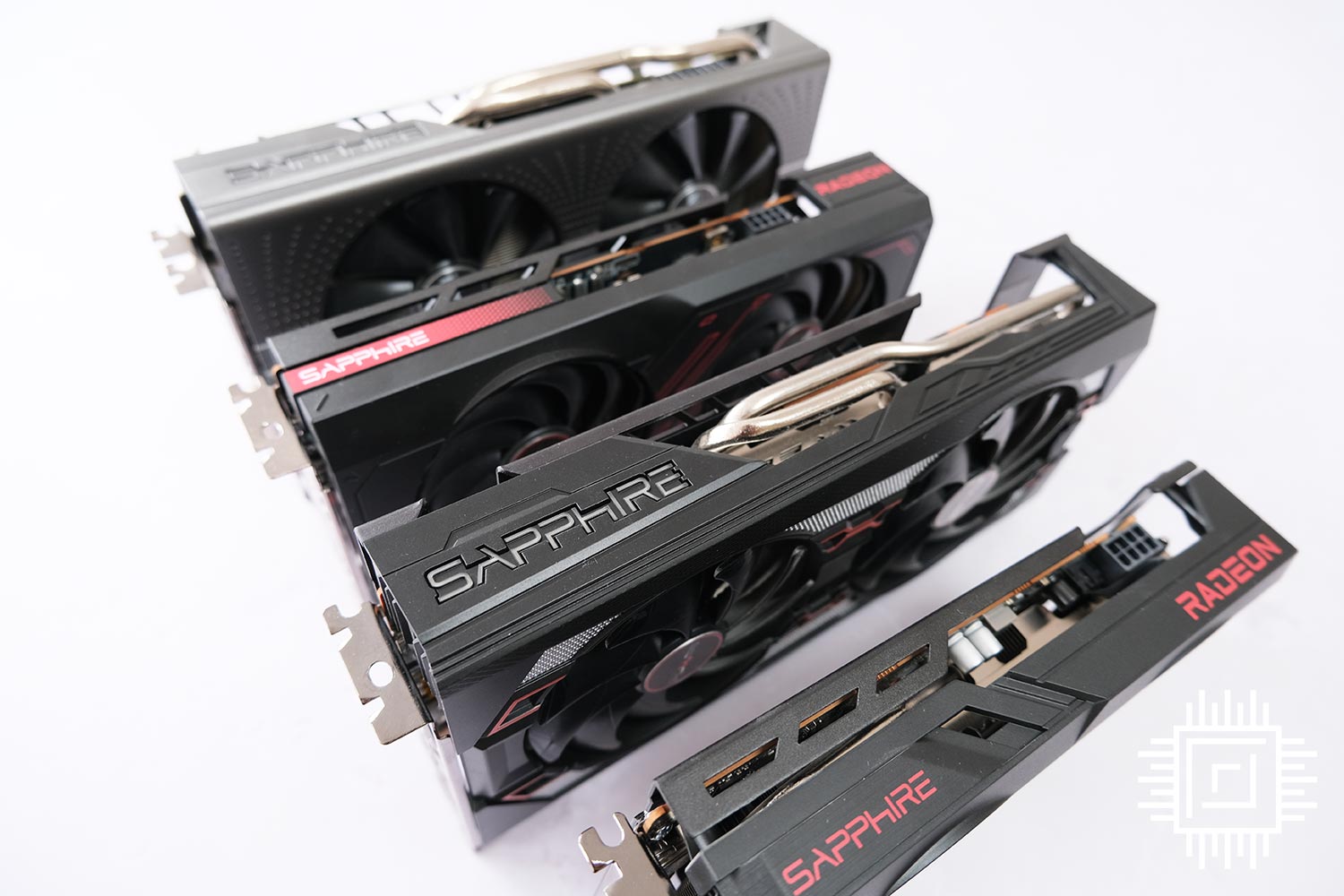
This state of events is particularly important for gamers on tighter budgets, who oftentimes hold out for a solid uptick in performance and features. Typically, the upgrade cycle is three years old, according to the major GPU heavyweights, though it can stretch to five in times of financial constraint. Here’s looking at you, cost-of-living crisis!
Providing a helping hand in understanding when an upgrade is most due and which benefits derive from purchasing a new graphics card, we’re examining the performance of mid-range GPUs through multiple generations, thereby offering real insight into the travails that affect millions of PC gamers worldwide.
Taking the Sapphire Pulse Radeon RX 7600 Gaming OC 8GB as the reference point for a current mainstream solution, we work backwards through Radeons, whilst keeping a beady eye on ensuring comparisons are valid and proper. To that end, we have the Sapphire Pulse Radeon RX 6600 Gaming 8GB, Sapphire Pulse Radeon RX 5600 XT Gaming OC 6GB, and Sapphire Nitro+ Radeon RX 580 Limited Edition 8GB all make appearances.
A Walk Down Memory Lane
A good question to ask at this juncture is why choose these particular GPUs and not others?
| Card | Architecture | Release | Price | Inflation |
|---|---|---|---|---|
| Pulse RX 7600 Gaming OC 8GB | RDNA 3 | Jun 2023 | $269 | $269 |
| Pulse RX 6600 Gaming 8GB | RDNA 2 | Oct 2021 | $329 | $397 |
| Pulse RX 5600 XT Gaming 6GB | RDNA | Jan 2020 | $279 | $361 |
| Nitro+ RX 580 Limited Edition 8GB | GCN 4 | Apr 2017 | $229 | $319 |
Illustrating the dollar release price of each comparison GPU, together with the month and year it launched, we derive an inflation-appreciating price, in today’s money, to compare against Radeon RX 7600. You’ll immediately notice all other GPUs are more expensive when accounted for this way, and this is deliberate. The question we’re asking is whether a value-conscious upgrade is worth it if you’re rocking one of these older, dearer cards, going back all the way until 2017.
By looking at numbers this way, there’s honest-to-goodness context to the validity of AMD’s claims of Radeon RX 7600 being an excellent upgrade from notable GPUs of yesteryear.
| Card | Radeon RX 7600 | Radeon RX 6600 | Radeon RX 5600 XT | Radeon RX 580 |
|---|---|---|---|---|
| Die size | 204mm² | 237mm² | 251mm² | 232mm² |
| Process | 6nm | 7nm | 7nm | 14nm |
| Transistors | 13.3bn | 11.1bn | 10.3bn | 5.7bn |
| Shaders | 2,048 | 1,792 | 2,304 | 2,304 |
| Core clock | 2,655 | 2,491 | 1,560 | 1,340 |
| GFLOPS | 21,750 | 8,928 | 7,188 | 6,175 |
| Infinity cache | 32MB | 32MB | No | No |
| Hardware ray tracing | Yes | Yes | No | No |
| Bus width | 128 bits | 128 bits | 192 bits | 256 bits |
| Memory clock | 18GT/s | 14GT/s | 14GT/s | 8GT/s |
| Bandwidth | 288GB/s | 224GB/s | 336GB/s | 256GB/s |
| Connectivity | 4.0 x8 | 4.0 x8 | 4.0 x16 | 3.0 x16 |
| TGP | 165W | 132W | 160W | 185W |
| Display outputs | HDMI 2.1a DP 2.1 | HDMI 2.1 DP 1.4a | HDMI 2.0b DP 1.4a | HDMI 2.0b DP 1.4a |
Drilling down into further specs that illuminate what’s going on under the hood, AMD’s kept the overall die size fairly consistent between generations and manufacturing processes. A significant reduction in the latter means today’s RX 7600 has 2.3x the number of transistors as the Radeon RX 580 in a smaller die.
The uninitiated may well ask why there hasn’t been a linear increase in shaders when transistor budget’s ballooned. Good question. The answer rests with graphics architects changing the way in which modern GPUs are designed, to better fit with the requirements of game engines. Such thinking is exemplified in AMD using a portion of transistor headroom to incorporate hardware-based ray tracing and Infinity Cache on the two newest RDNA 2 / 3 architectures.
Even if talk is of shader numbers levelling off, it’s missing the point somewhat. You see, iterative process nodes have enabled Radeons to run at much higher clocks than before. Look closely to notice Radeon RX 7600 operates at almost double the frequency of Radeon RX 580.
There’s also a deeper understanding of how mid-range GPUs now react to memory-bound requests. AMD’s use of on-chip Infinity Cache reduces the need for wider memory buses that ordinarily take up precious silicon and burn through power. In effect, what was accomplished by pure grunt before is now architecture-refined into a more efficient die.
Pure scaling is less important than innovation, though do be aware the latest mainstream cards run off a x8 interface. If you’re still using a particularly old PC rocking Gen 3 connectivity, a lack of bandwidth may stall framerate in some scenarios.
Outside of absolute performance, display outputs generally enjoy a generational upgrade in some meaningful way. For the latest Radeon RX 7600, using what is dubbed the Radiance Engine, for the first time, AMD provides hardware acceleration for popular AV1 encode, all the way up to 8K60, matching the decode side. Depending upon configuration, cards also support up to four displays through either HDMI 2.1a or DisplayPort 2.1.
Radeons Ready To Rumble
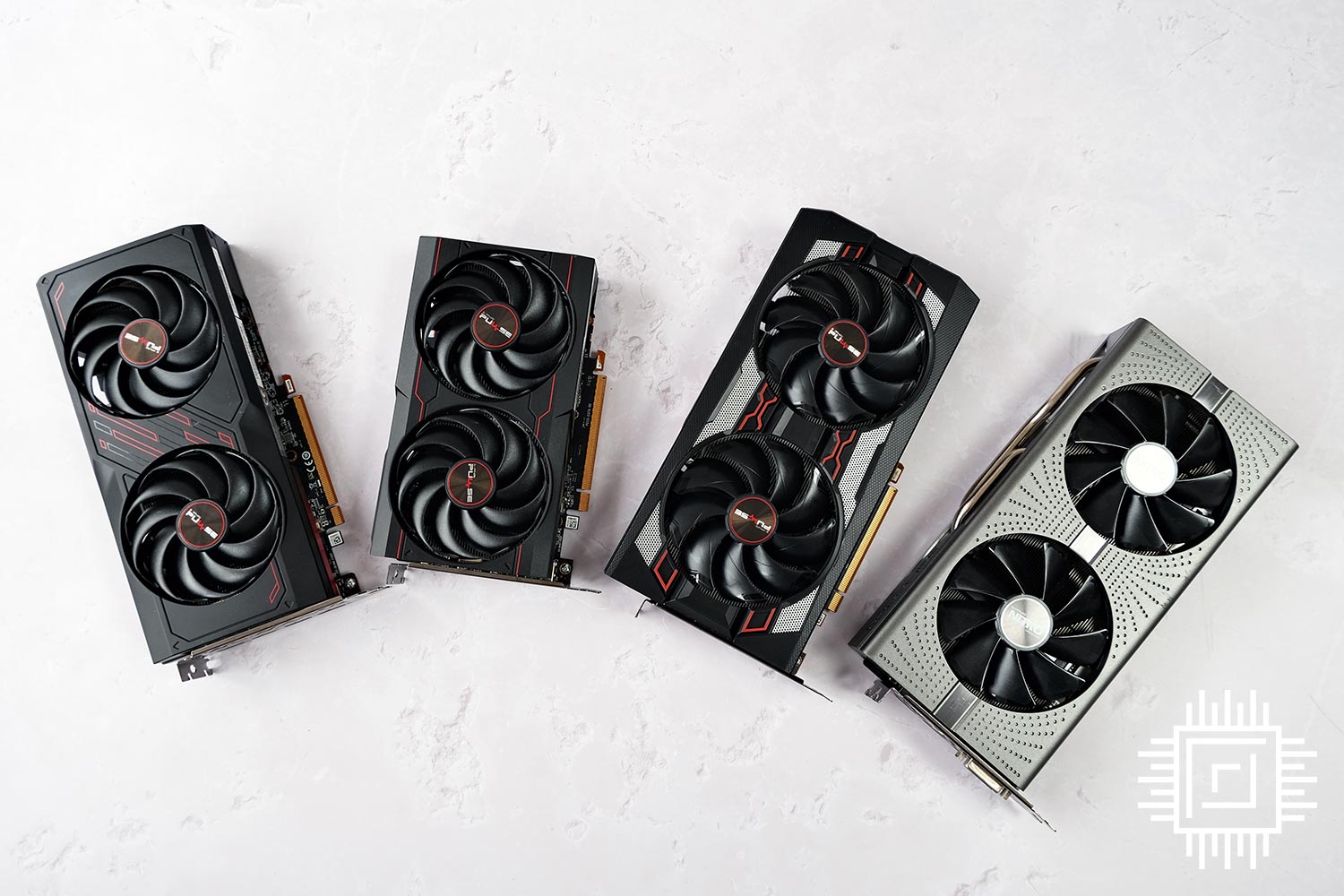
Notice that four generations of mid-range Radeons have reasonably similar power requirements. Most thirsty of all is Radeon RX 580, natively implemented with a 185W TGP, but rising to over 200W for partner-overclocked models such as Nitro+.
Leanest of the bunch is Radeon RX 6600, which stands to reason as it has the lowest power budget of the quartet. Presented here in a 193mm-long form factor, Sapphire’s Pulse harnesses 140W when running full chat. Next up is the meatier Pulse Radeon RX 5600 XT, while the newest of the bunch is Pulse Radeon RX 7600.
| Card | Dimensions (mm) | Weight (g) | Power (w) | Connector |
|---|---|---|---|---|
| Pulse RX 7600 Gaming OC 8GB | 240 x 107 x 44 | 611 | 185 | 8-pin |
| Pulse RX 6600 Gaming 8GB | 193 x 120 x 40 | 501 | 160 | 8-pin |
| Pulse RX 5600 XT Gaming 6GB | 254 x 135 x 47 | 909 | 140 | 8-pin |
| Nitro+ RX 580 LE 8GB | 260 x 135 x 43 | 1,001 | 235 | 8+6-pin |
Not all cards are created equal from a cooling point of view, and it’s interesting to see Nitro+ RX 580 being practically double the weight of Pulse RX 6600.
Performance
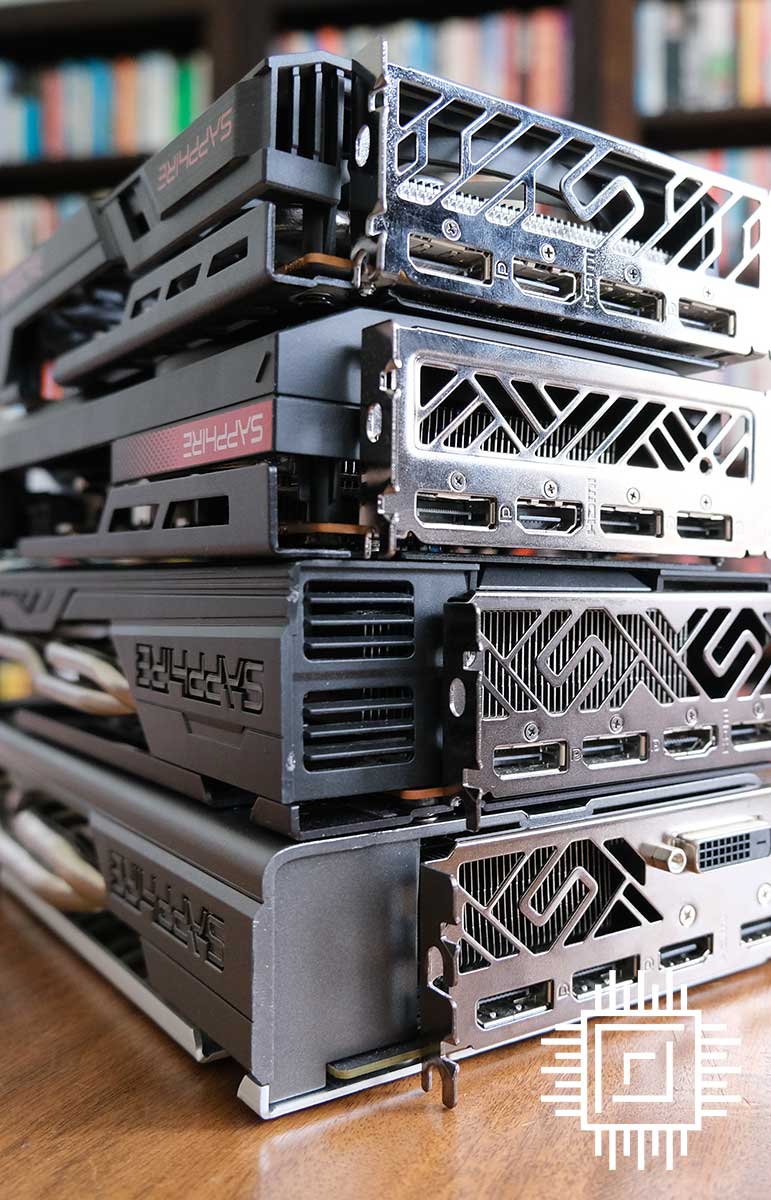
Club386 Test Platform
Processor: AMD Ryzen 9 5950X
Motherboard: Asus ROG Crosshair VII Formula
CPU Cooler: Corsair iCue H115i Elite Capellix
Memory: 64GB G.Skill Trident Z Neo DDR4-3200
Storage: 2TB Corsair MP600
Power Supply: be quiet! Straight Power 11 Platinum 1,000W
Chassis: Fractal Design Define 7 Clear Tempered Glass
Monitor: Philips Momentum 436M6VBPAB
Operating System: Microsoft Windows 11 Pro
Club386 may earn an affiliate commission when you purchase products through links on our site.
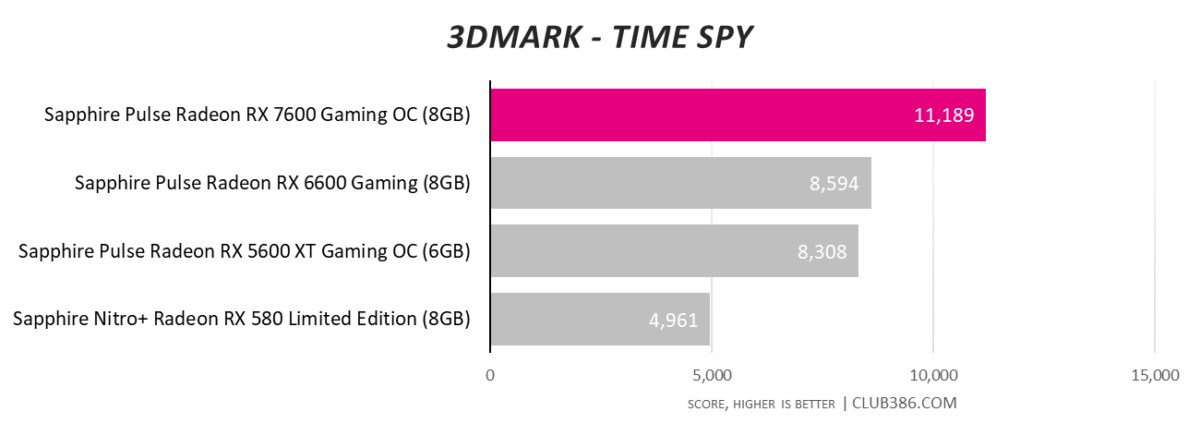
3DMark is a standardised benchmark looking at probable DX12 performance, and is a reasonable proxy for real-world gameplay.
Tested on the same Ryzen 9 5950X platform, results are interesting. Sapphire upped its performance game between 2017’s RX 580 and 2020’s RX 5600 XT. Do recall they use different architectures, so comparing spec numbers verges on the pointless. Here it’s GCN 4 vs. RDNA.
A lack of performance advancement between RX 5600 XT and RX 6600 is explained away, at least for this benchmark, by the former having a larger die and more shaders.
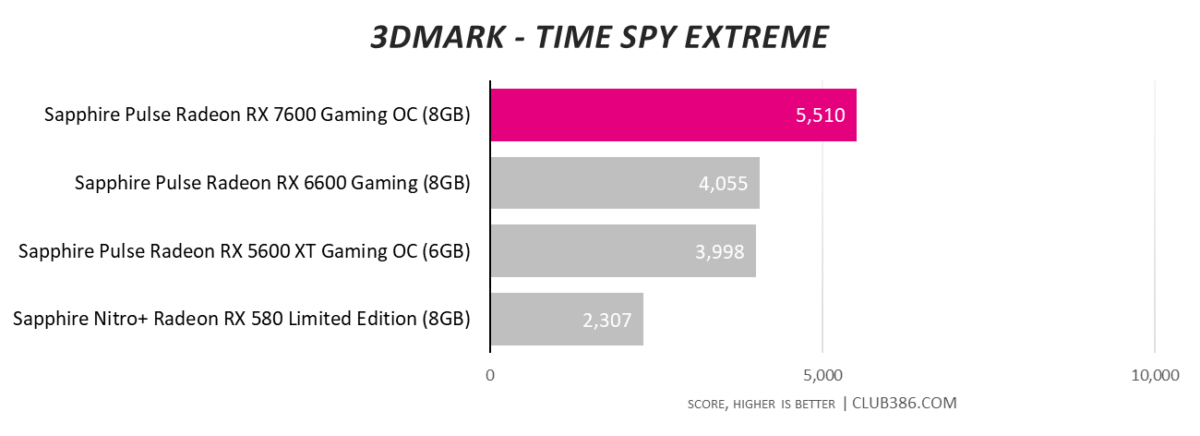
Upping the load places newer Radeons’ Infinity Cache into the crosshairs. It does well enough, as Radeon RX 7600 increases its percentage lead over, say, Radeon RX 5600 XT when evaluated at a 4K resolution.
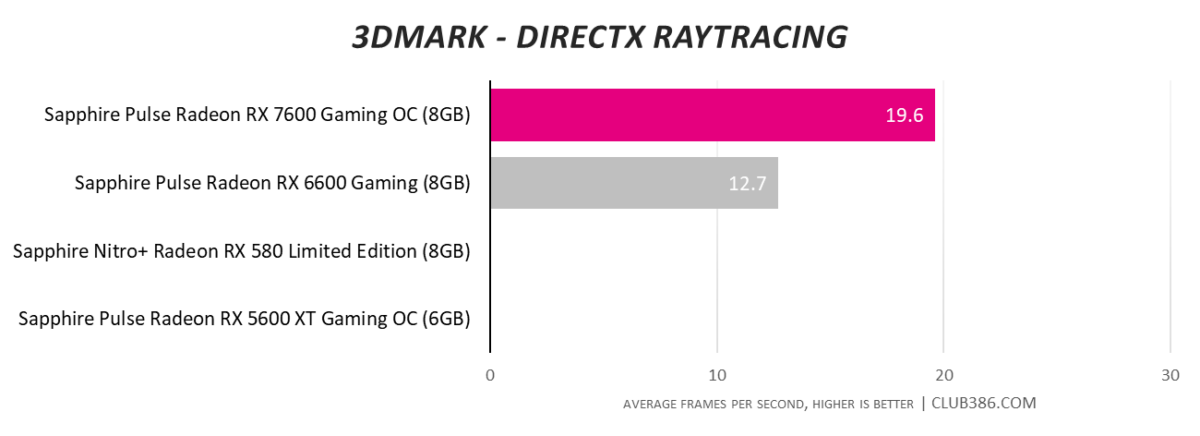
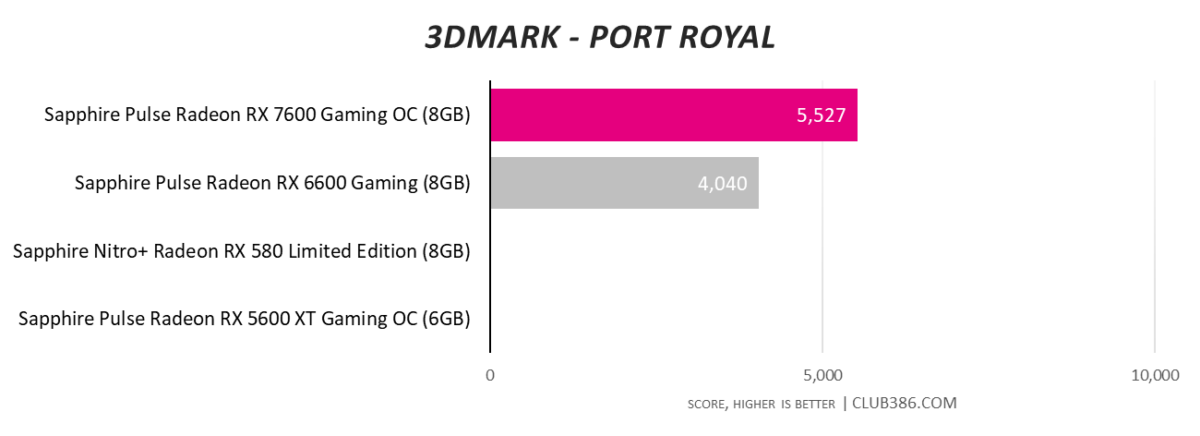
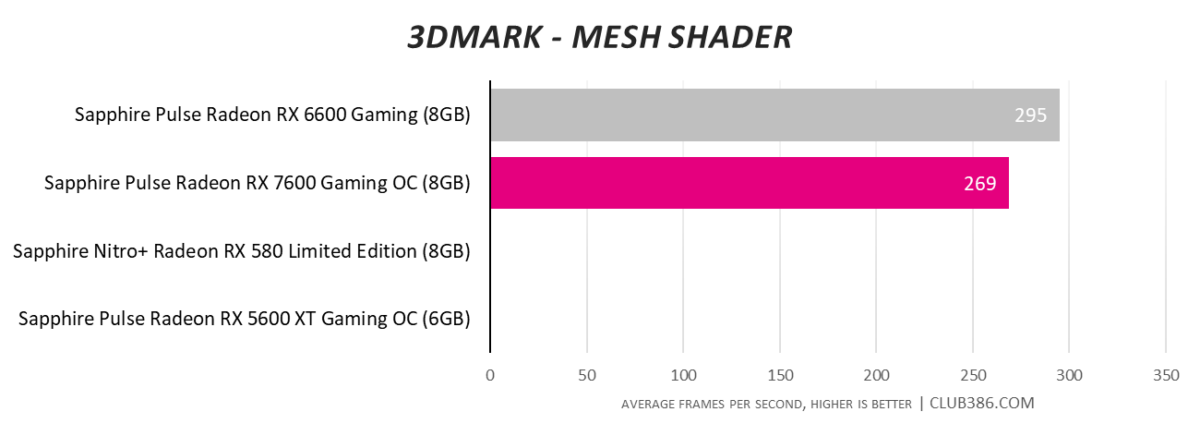
These three benchmarks draw attention to an important point. Readers rocking Radeon RX 580- and RX 5600-class of GPUs have no resort to hardware-based ray tracing smarts. Sure, they can run RT-enabled games through software, but who wants to sit through a slide show?
Performance comes in many forms, and one that’s increasingly important is super-accurate lighting emanating from ray tracing. If your card doesn’t have it, you’re not playing the game as the developer truly intended, which is enough incentive to countenance an upgrade.
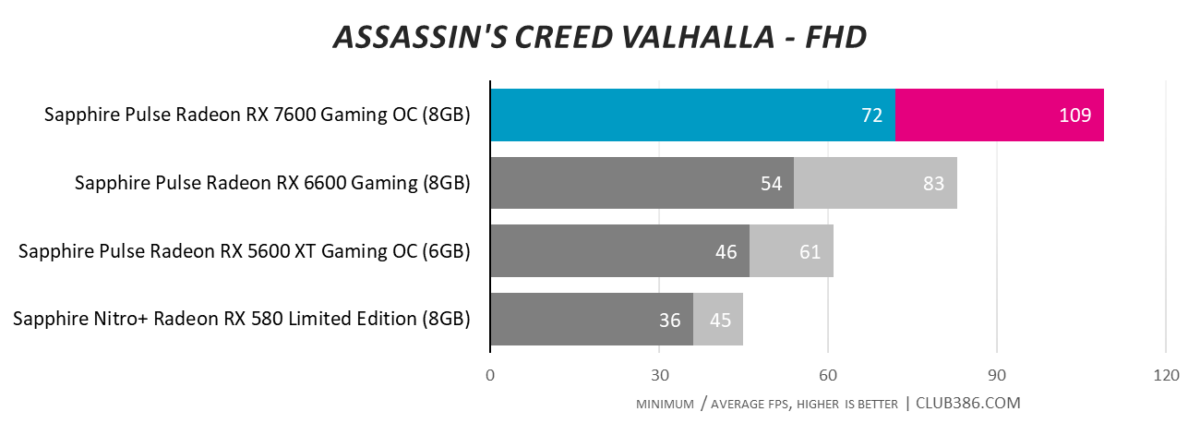
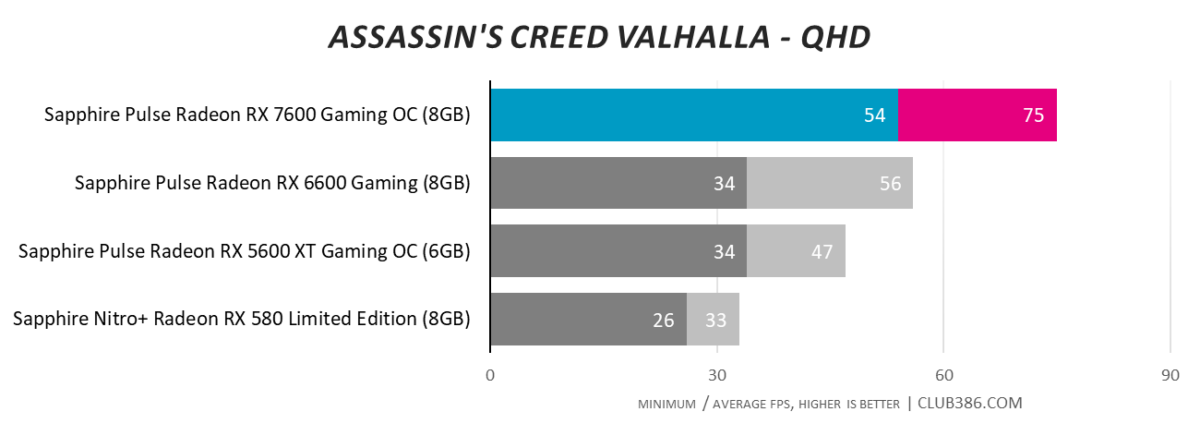
It’s how GPUs react to a game engine that really matters. Deliberately placing Assassin’s Creed Valhalla at highest in-game settings is invaluable in appreciating what modern cards offer.
Quite a few reasons coalesce into pushing Radeon RX 7600 on to another level. FP32-heavy RDNA 3 architecture is one, Infinity Cache is another, while a super-high core clock adds a necessary punch.
Sometimes it’s easy to get caught up in stratospheric framerates exhibited by premium cards such as the Radeon RX 7900 XTX. They’re all fine and well, but moving from 100fps to 135fps doesn’t change the game-playing experience that much. It’s more important to receive notable rises at the lower end of the scale, so the 47fps provided by RX 5600 XT shifts to 75fps on RX 7600; this 28fps increase is clear and obvious in terms of smoothness at a QHD resolution.
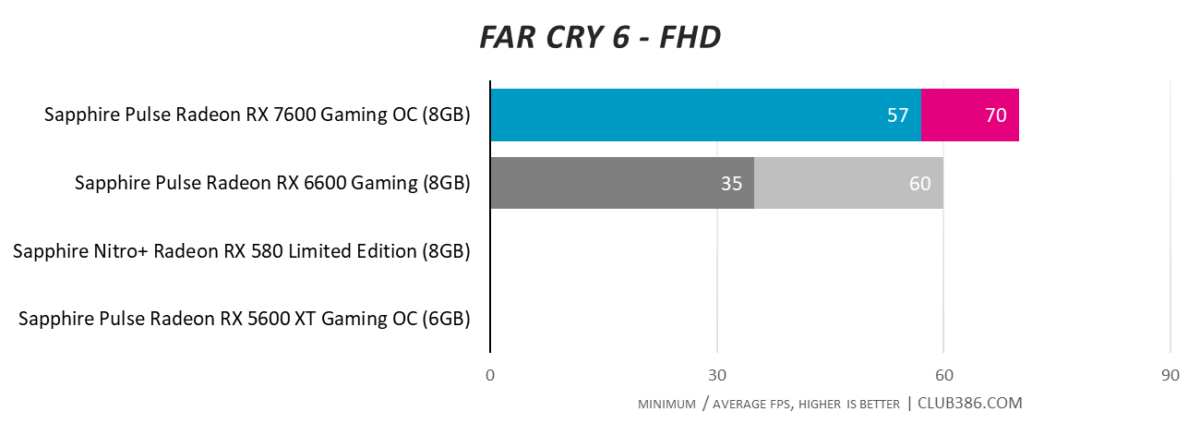
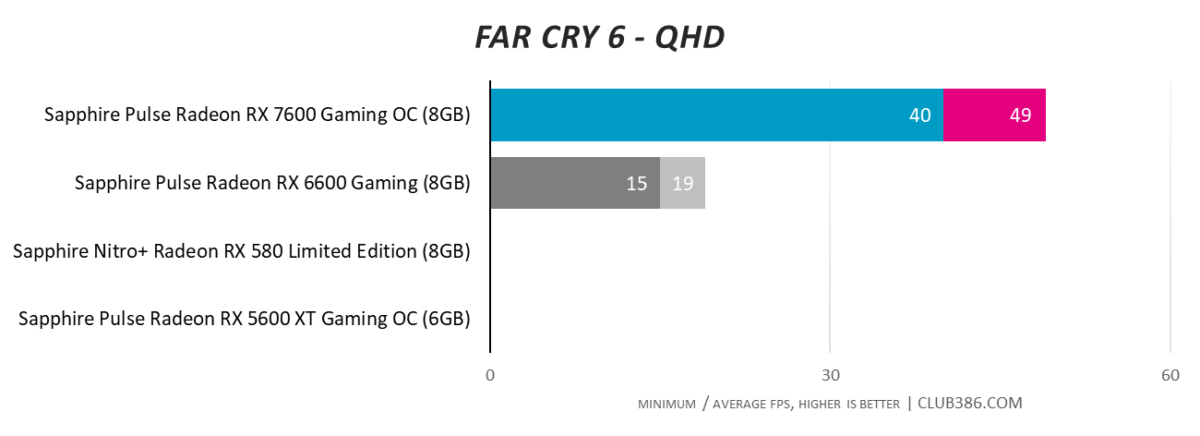
Here’s another interesting observation. Using ray tracing again, meaning no results for RX 580 and RX 5600 XT, the top two cards produce decent-enough numbers at FHD, but look what happens at QHD.
Pulse Radeon RX 6600’s weaker ray tracing hardware begins to stall badly, rendering the game mostly unplayable. Food for thought.
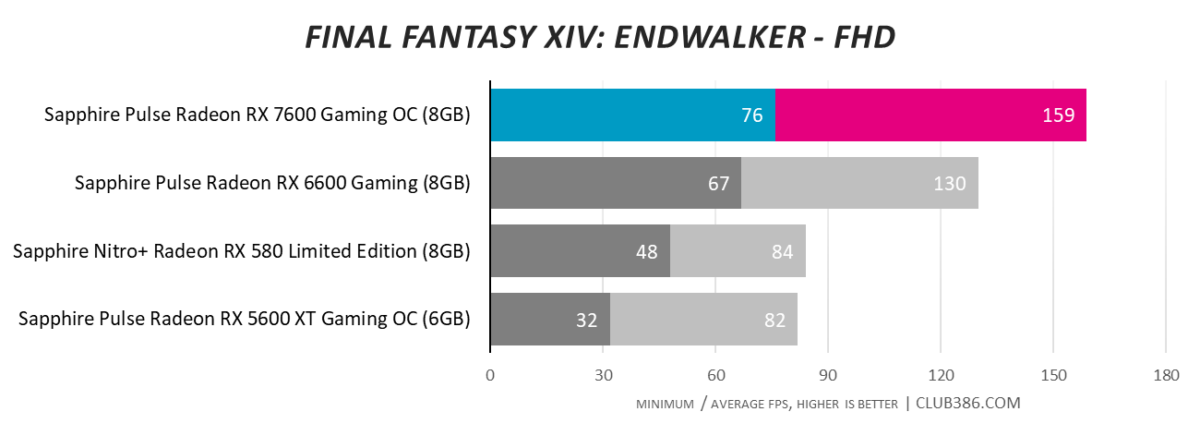
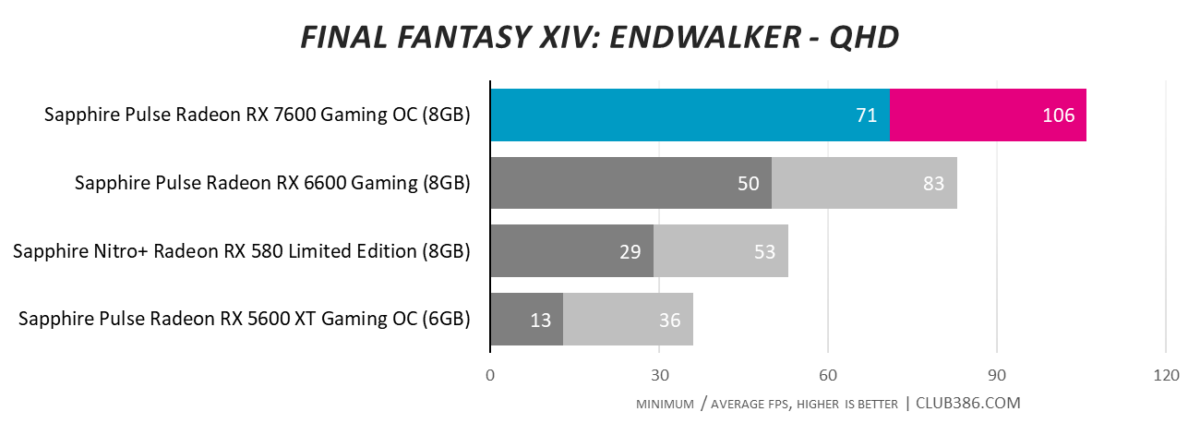
Final Fantasy reveals another salient truth. The 6GB framebuffer present on Radeon RX 5600 XT struggles, particularly so at QHD, where the result is lower than expected.
Viewing performance with our upgrade hat on, you can literally double the framerate by swapping out an RX 580 for an RX 7600.
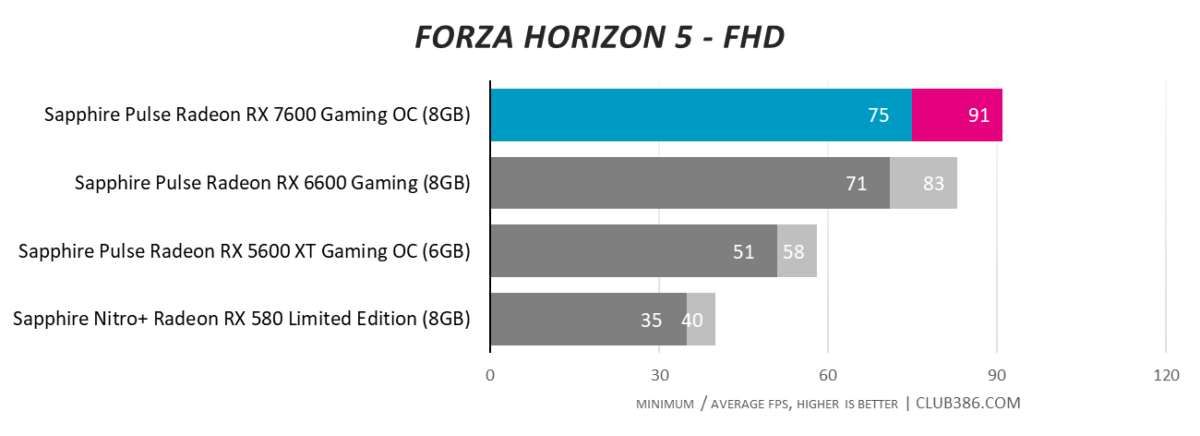
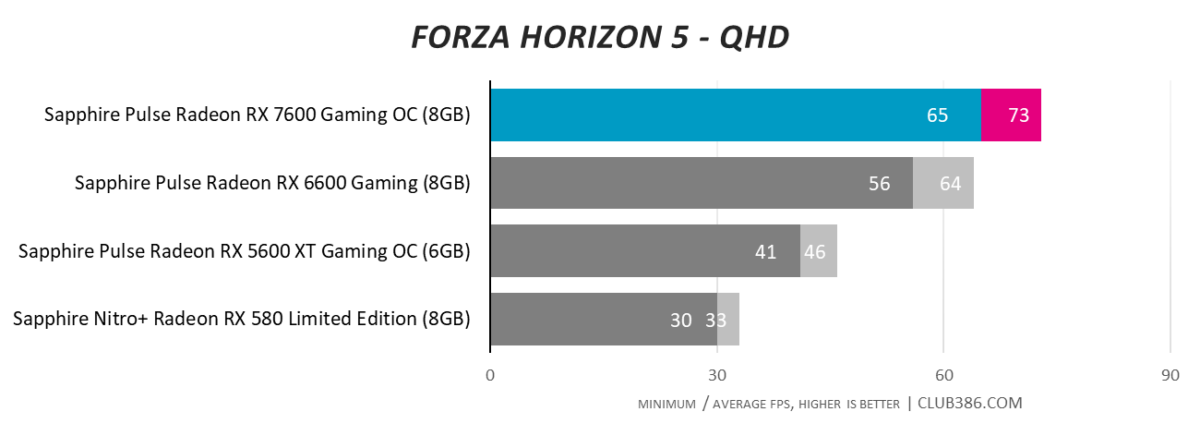
Forza Horizon 5 is gorgeous to look at and is coded well. Performance jumps in concert with generational GPU hardware, and as a gamer it’s good to know that swapping out to a newer card offers solid framerate increases.
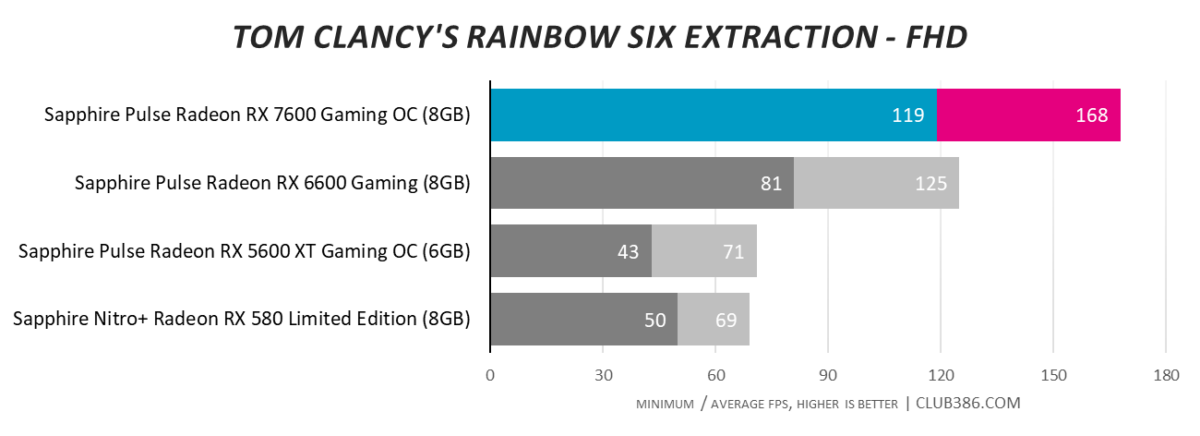
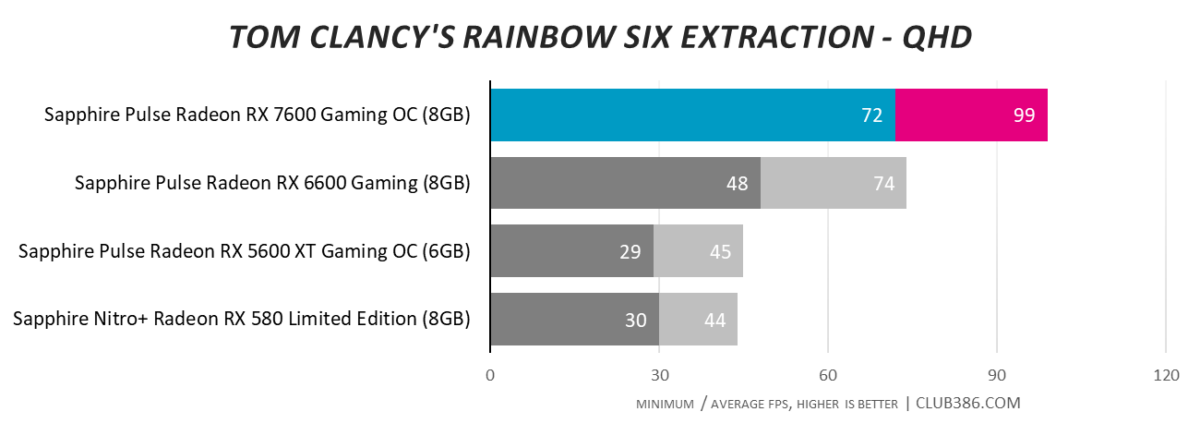
That Radeon RX 580 or RX 5600 XT not man enough in your favourite title? Evidence suggests there’s an easy enough fix.
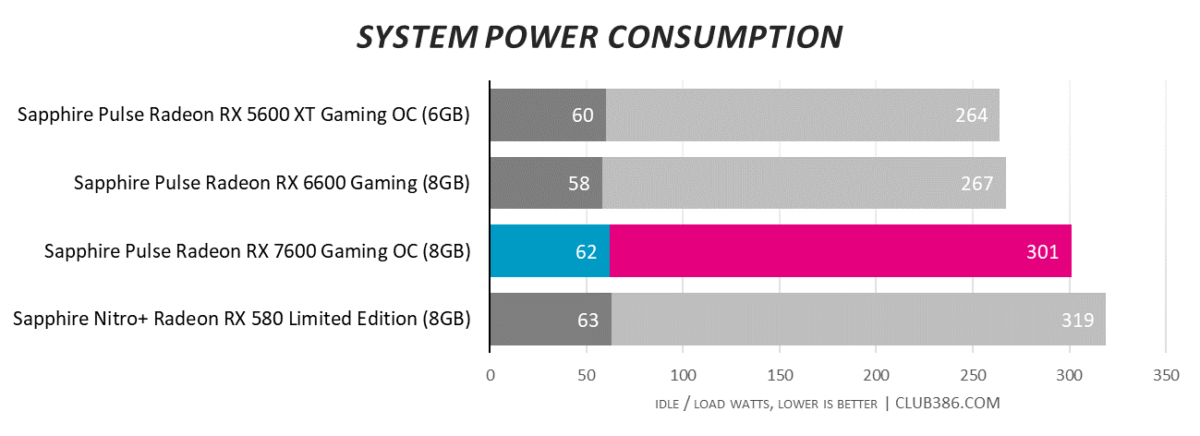
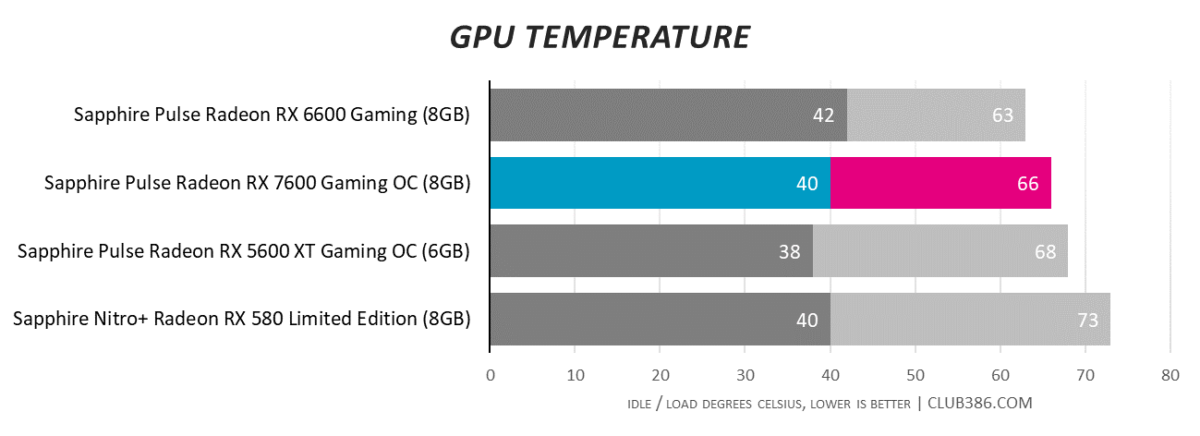
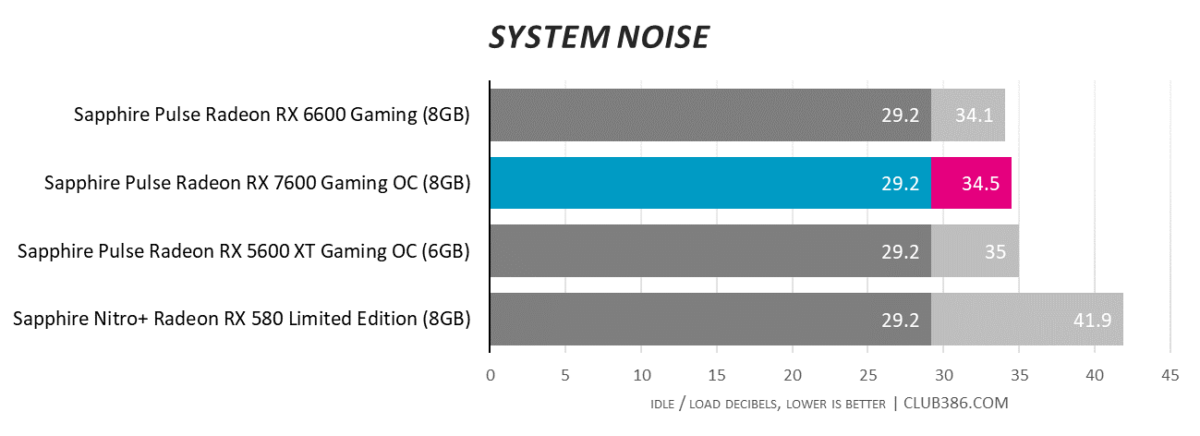
The quality of Pulse and Nitro+ coolers translates to acceptable temperature and, on the whole, a quiet gaming experience.
Conclusion
Scratching a PC hardware upgrade itch is a satisfying experience. The great news is you needn’t spend the earth doing so. Providing excellent bang for buck, substituting an older graphics card for something new visibly elevates gaming immersion. Looking back through generations of mid-range Radeons underscores this belief and shows modern GPUs are more than the sum of their on-paper specifications.
Launched at $269 / £259 and further sweetening the deal with Starfield included, Radeon RX 7600 routinely provides over twice the performance of Radeon RX 580 and posts meaningful gains over even last-generation RX 6600. In essence, there’s at least a resolution upgrade over similar-priced GPUs from previous years, so if your system is clinging on to an older card but creaking under the weight of modern games, an upgrade is very much in order and affordable to boot.
